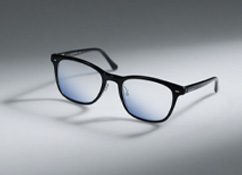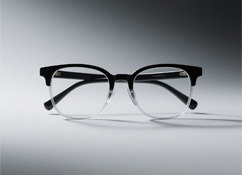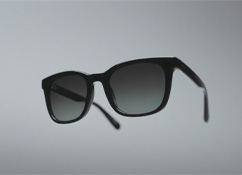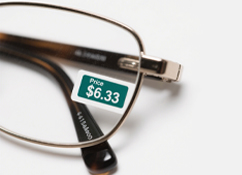We Ruined 4 Pairs of Glasses—Here’s How Heat Damages Them (And How to Protect Yours)
Glasses are one of the priciest everyday items most people own—$50 to $500 or more for a good pair. But we often treat them carelessly: wiping them with that little cloth, yanking them off with one hand… and then there’s heat. If you cook at home, every time you lift a pot lid, you might be putting your lenses at risk. Let’s break down why heat destroys glasses—and how to keep yours safe.
Why Heat Is Bad for Your Lenses
Modern lenses aren’t just a single piece of plastic—they’re more like a sandwich:
The “filling”: A flexible resin core, usually made of polycarbonate, MR-series plastic, or CR-39. It softens and expands a tiny bit when heated.
The “outer layers”: Hard, scratch-resistant coatings (made of materials like silica or titanium dioxide). These coatings are rigid—they don’t expand when heated.
When lenses get hot, the core swells, but the coatings can’t stretch to match. This mismatch causes the coatings to crack—kind of like how skin gets stretch marks when it can’t keep up with rapid growth.
Our Test: How Different Heat Scenarios Affect Glasses
We tested 5 identical pairs (same material, same lens index) in common hot situations to see what happens. Here’s what we found:
Boiling Water Splashes: They Survived!
First pair: We doused it with boiling water (212°F/100°C) repeatedly. No visible cracks or coating damage. Good news: Spills from tea, coffee, or even hot showers probably won’t hurt your glasses.
Steam from a Pot: Cracks Happened Fast
Second pair: We held it over steaming boiling water (around 212°F/100°C) for just 5 seconds—like checking on pasta while cooking. At first glance, it looked fine. But under a light? Tiny cracks in the coating, right where the steam hit.
Pro tip: Skip lifting lids mid-cook if you can. If you must, lean way back—keep your glasses at least a foot away from the steam.
Car Sun Exposure: Risky in Peak Summer
Third and fourth pairs: We left them in a car—one on the dashboard, one in the overhead compartment. On mild days (68–86°F/20–30°C outside), the car only hit 122°F/50°C, and the glasses stayed intact.
But here’s the catch: In peak summer, when it’s 86°F/30°C outside, cars can hit 158°F/70°C in direct sun. News and reviews are full of stories: prescription glasses, readers, even sunglasses left in hot cars often end up with cracked coatings.
Play it safe: Take your glasses with you. Never leave them on the dashboard—sunlight heats that spot fastest.
Do You Have to Coddle Your Glasses Forever?
Nope! Look for heat-resistant lenses. These are designed to handle 185°F/85°C or higher (some even stand up to 212°F/100°C+). They’re perfect if you’re often in hot environments—like outdoor workers, frequent cooks, or anyone who forgets their sunglasses in the car.
FAQ: Heat and Your Glasses
Q: Can heat damage sunglasses too?
A: Yes! Sunglasses have the same coating-and-core structure as prescription lenses. Steam, hot cars, or even leaving them on a hot patio table can crack their coatings.
Q: My lenses have tiny cracks—are they ruined?
A: Maybe not, but the cracks can get worse over time. They might also make vision slightly blurry (especially in bright light). If the cracks bother you, ask your optician about replacing the lenses.
Q: Is cold bad for glasses too?
A: Not really. Cold can make lenses a little stiffer, but it’s heat (and sudden temperature changes) that cause the most damage.
Final Tip: Keep Heat at a Distance
Your glasses work hard—don’t let heat cut their life short. A little caution goes a long way: step back from steam, grab your glasses before leaving the car, and opt for heat-resistant lenses if you’re in hot spots often. Your wallet (and your vision) will thank you.











